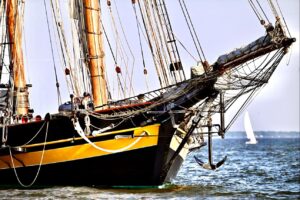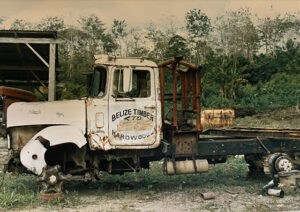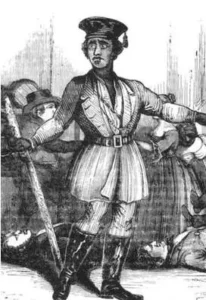
Wind Squall Management – June 2024 Voyage to Bermuda & Back
Captain’s Log Back in May a large schooner in cargo service was hit by suddenly strong winds during the night and sank not far from the northwest side of

Captain’s Log Back in May a large schooner in cargo service was hit by suddenly strong winds during the night and sank not far from the northwest side of

Today’s story is another excerpt from Leslie Bridgett’s Asia with Pride voyage log. Fresh off a plane from Baltimore, Leslie traverses the Panama Canal and prepares to sail over the horizon to Hawaii. Before

Date: Monday, May 6, 2024 Location: Anchored at Annapolis While the 2024 season did not officially start till Maryland Day Celebration weekend of March 23/24, PRIDE’s first underway period started

I had sailed with Peter Boudreau on the first Pride of Baltimore, and was his Yard Foreman for the building of the pungy schooner Lady Maryland. So when Peter was awarded

The Indiana Area High School (IHS) Sailing Club experienced a boating extravaganza on their field trip to Baltimore, Maryland, on Thursday April 18. They began their adventure on Pride of

This week we’re sharing a short story about a War of 1812 privateer believed to be from Vienna, on Maryland’s Eastern Shore. This story is a bit mysterious, and represents